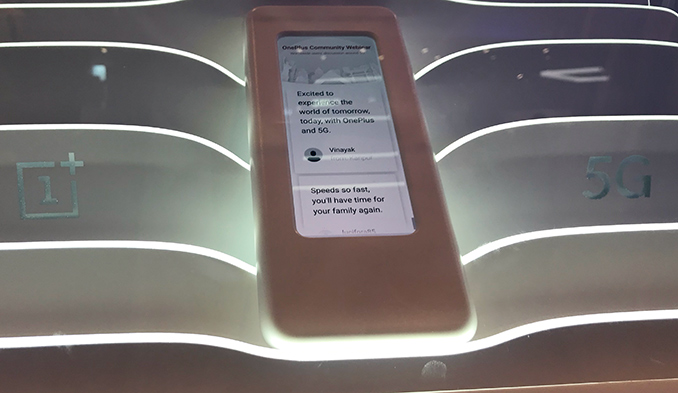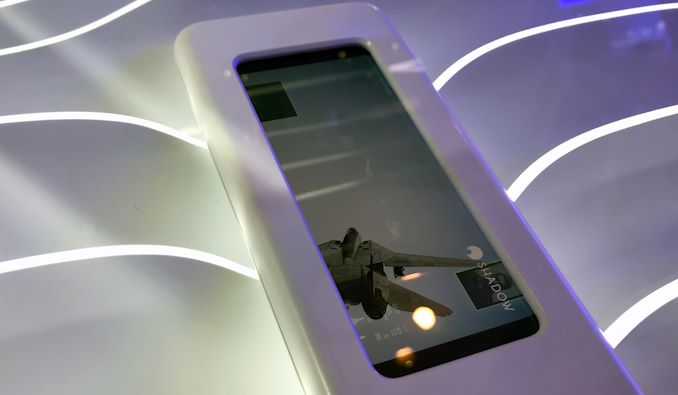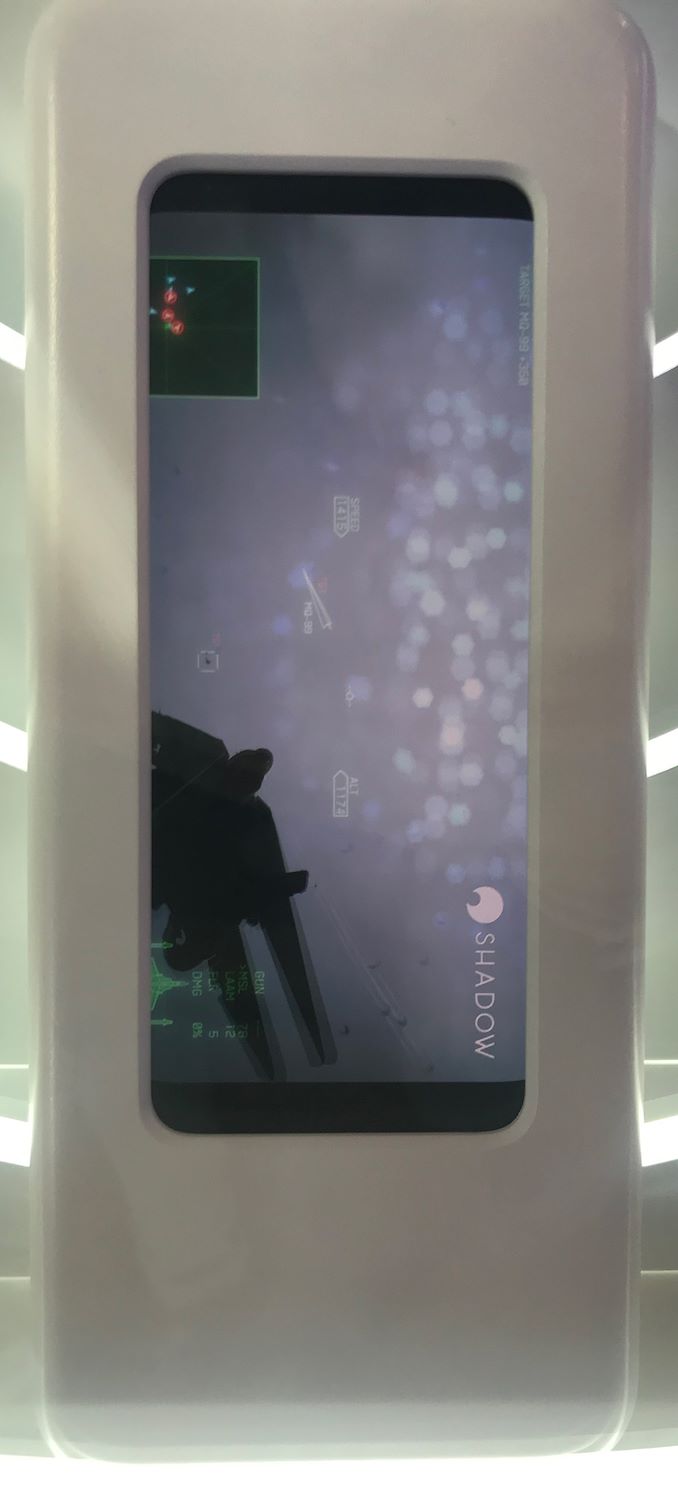OnePlus 5G Prototype: Living Large
by Anton Shilov on February 25, 2019 12:00 PM EST- Posted in
- Smartphones
- Trade Shows
- OnePlus
- 5G
- Snapdragon 855
- MWC 2019

Here at Mobile World Congress, a number of companies are showing off 5G-enabled smartphones or prototypes. We've seen devices from most of the top smartphone global manufacturers, and despite suggesting they won't show anything new here at Mobile World Congress a few weeks ago, Oneplus showcased its 5G prototype.
The company has announced that it will be the first to offer a 5G enabled device in the UK, based on trails with EE, using Qualcomm's solution. The demonstration at the show involved only two aspects, however. First, the demonstration showed that the device can receive information from sub-6 GHz sources. Second, that the device was able to render a flight simulator game at a decent framerate, and stream it to a TV.
OnePlus is tight-lipped about everything regarding this device. It is camouflaged heavily, so we cannot even find out the aspect ratio of its display, the size of the bezels, the rear camera arrangement, etc. The only thing we were able to determine is that the display looked suitable for a large sized flagship.
Related Reading
- A Quick Look at Qualcomm’s 5G Smartphone Reference Design
- The Snapdragon 855 Performance Preview: Setting the Stage for Flagship Android 2019
- Intel and Fibocom to Co-Develop a 5G M.2 Module for System Integration
- First Glimpse of Huawei Mate X: A Foldable 5G Phone
- Qualcomm Announces X55 Modem: 5G Multi-mode & New Advanced ICs














7 Comments
View All Comments
sing_electric - Monday, February 25, 2019 - link
It's telling that the Qualcomm 5G reference device, Samsung's 5G S10 variant and, in all likelihood, the OnePlus 5G device are all gargantuan. My bet is that battery life is likely to be middling at best, despite the large size, and I wonder how much antenna placement is dictating the size and shape of these devices (in particular, if mmWave is as picky as some suspect it might be, necessitating a whole of array of antennas just to hope one's in the right place and not blocked by a hand, etc.)Unlike 4G, I don't think I'll care that much if my phone has 5G for the next 2-3 years at least, given those issues. Fixed wireless, etc., are more exciting applications to me than just giving me faster downloads on my phone.
Ian Cutress - Monday, February 25, 2019 - link
Part of the size is down to the mmWave antenna requirements. Part of it is the general trend of smartphones getting larger.thomasg - Monday, February 25, 2019 - link
mm-Wave antennas are a lot smaller than Sub-6-GHz antennas. What takes some space is having a lot of them, i. e. phased arrays.And making these frequencies usable in practice just requires large arrays.
Qualcomms antenna-packages appear to use 8 antenna elements bundled to one phased array package, and the X50 reference layout utilizes 2 of those (i. e. 16 antennas).
The biggest issue is, that you really have to have both. So we now need at least 4 Sub-6 GHz antennas, 2 large mm-Wave phased array packages, a GPS antenna and 2 WiFi/BT antennas.
And then there's the chipset.
We now need another RF frontend for the 28 GHz path. This can be pretty small due to lax filtering requirements, but it still is a new frontend taking up additional space.
The baseband also needs to be quite beefy, after all it now needs to handle 800 MHz of bandwidth while before 100 MHz was the upper limit.
It still needs to handle the Sub-6-GHz which require more DSP performance and it needs to do that additionally.
I don't know how they do it, but I wouldn't be surprised if they just doubled the DSPs compared to the current high-end LTE baseband.
And after all that, you'll need to drive that thing off a battery.
In NSA mode it will have all the power requirements of the LTE section plus the new requirements do work on 28 GHz.
In most cases this won't actually do anything for quite a while, but you'll have to spend a significant increase in power anyway (in the long run this will even out due to better coverage and shorter data bursts).
So no, it's not devices getting bigger in general, they really need to spend the space to make it work.
Korni22 - Monday, February 25, 2019 - link
Sorry if this sounds pedantic:The device is likely not rendering the game (which is Ace Combat 7) but this demo is likely just to show off the fast networking capabilities, as the game is merely streamed using https://shadow.tech, which means the game is running on a remote Windows machine, rather than on the phone itself.
gteichrow - Monday, February 25, 2019 - link
Good point and I think you're spot on.3DoubleD - Monday, February 25, 2019 - link
" the demonstration showed that the device can receive information from sub-6 GHz sources"My current phone can also receive information from sub-6 GHz sources. In fact, every phone I've ever owned can do this ;-)
I'm sure this was supposed to be illustrative of some cool 5G feature, but it isn't explained here and since I find the whole 5G thing over the top and overblown I can't be bothered to look it up myself.
jabber - Tuesday, February 26, 2019 - link
3G was disappointing.4G was disappointing.
5G will be?
How many times does it take it get stuff right?